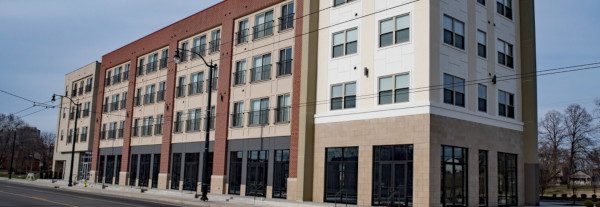jar546
CBO
The Code Says:
903.3.1.2 NFPA 13R sprinkler systems.
Automatic sprinkler systems in Group R occupancies shall be permitted to be installed throughout in accordance with NFPA 13R where the Group R occupancy meets all of the following conditions:
Insight into this IFC code section:
The provided insights from the code hearings detail the reasoning behind proposed revisions to the 2021 International Fire Code concerning NFPA 13R sprinkler systems in Group R occupancies. This discussion appears to address a significant and practical concern about the operational realities and architectural configurations commonly found in multifamily residential buildings. Here are some key points and their potential implications:
903.3.1.2 NFPA 13R sprinkler systems.
Automatic sprinkler systems in Group R occupancies shall be permitted to be installed throughout in accordance with NFPA 13R where the Group R occupancy meets all of the following conditions:- 1.Four stories or less above grade plane.
- 2.For other than Group R-2 occupancies, the floor level of the highest story is 30 feet (9144 mm) or less above the lowest level of fire department vehicle access.
For Group R-2 occupancies, the roof assembly is less than 45 feet (13 716 mm) above the lowest level of fire department vehicle access. The height of the roof assembly shall be determined by measuring the distance from the lowest required fire vehicle access road surface adjacent to the building to the eave of the highest pitched roof, the intersection of the highest roof to the exterior wall, or the top of the highest parapet, whichever yields the greatest distance. - 3.The floor level of the lowest story is 30 feet (9144 mm) or less below the lowest level of fire department vehicle access.
Insight into this IFC code section:
The provided insights from the code hearings detail the reasoning behind proposed revisions to the 2021 International Fire Code concerning NFPA 13R sprinkler systems in Group R occupancies. This discussion appears to address a significant and practical concern about the operational realities and architectural configurations commonly found in multifamily residential buildings. Here are some key points and their potential implications:
- Adjustment of Height Limits:
- The proposal to increase the height limit from 30 feet to 35 feet for the floor level of the highest and lowest stories relative to the fire department vehicle access addresses a practical issue in modern construction. Many contemporary building designs, especially those with mixed-use elements or higher floor-to-ceiling requirements, would naturally exceed the previous 30-foot limit, thus rendering the NFPA 13R system unusable under old regulations, despite its intended purpose for buildings up to four stories.
- By adjusting the limit to 35 feet, the code would better accommodate typical building practices and designs without compromising safety, making NFPA 13R systems more applicable and maintaining their intended benefit for fire safety in low to mid-rise residential structures.
- Consideration of Building and Access Road Elevations:
- The measurement of building height from the lowest level of fire department vehicle access (potentially up to 150 feet away from the building) rather than from the adjacent grade can significantly impact compliance. This factor is crucial for understanding the practical challenges in implementing the code, as variations in terrain and site layout can make a substantial difference in meeting the height requirements.
- Broader Implications for Fire Safety and Code Compliance:
- The 2016 NFPA Journal findings support the effectiveness of NFPA 13R systems in protecting lives and reducing property damage, which underpins the rationale for expanding their applicability to more buildings.
- The debate over the height limit also reflects a deeper consideration of how fire safety codes intersect with building design and urban development. The code's flexibility in accommodating realistic building heights without compromising safety standards is essential for ensuring its broad acceptance and implementation.
- Economic Considerations:
- The discussion around the economic impact of shifting from NFPA 13R to NFPA 13 systems highlights important considerations about housing affordability. The increased costs associated with NFPA 13 systems, due to more extensive sprinkler coverage and other technical requirements, could have a significant impact on construction costs and, consequently, on housing affordability.
- Committee Actions and Industry Feedback:
- The committee's decision to disapprove the proposal based on previous discussions and the absence of compelling new evidence or changed circumstances since the last code cycle indicates a cautious approach to code amendments. This conservatism ensures that changes are made based on solid evidence and broad consensus, reflecting a balance between innovation in fire safety and stability in code regulations.

